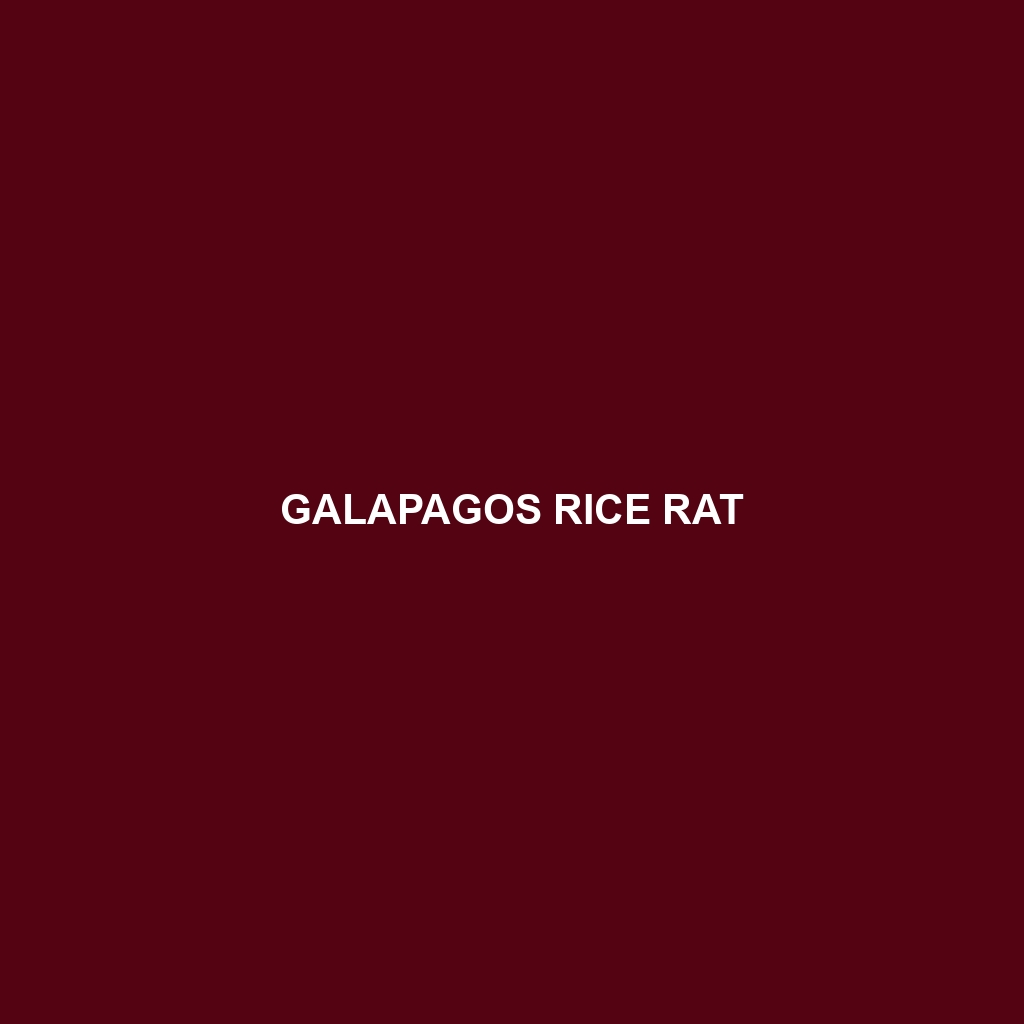Galapagos Rice Rat
Common Name: Galapagos Rice Rat
Scientific Name: Aegialomys galapagoensis
Habitat
The Galapagos Rice Rat is primarily found in the Galapagos Islands, specifically on several of the major islands including Santa Cruz, San Cristóbal, and Isabela. This species inhabits a range of environments, from coastal scrublands to highland forests and grasslands, thriving in both dry and moist areas. These rats prefer habitats with dense vegetation which provide essential cover from predators.
Physical Characteristics
Galapagos Rice Rats are medium-sized rodents, typically measuring 20 to 30 centimeters in body length, excluding the tail, which is an additional 15 to 25 centimeters. They have a slender body covered in soft fur that can range from a light brown to a darker gray hue. Their underbellies are usually lighter, and they possess large, rounded ears and prominent eyes, which aid them in nocturnal activities. Distinctive features include their long, pointed snouts and strong hind legs, enabling agile movement across their terrain.
Behavior
This species exhibits nocturnal behavior, being most active during the night when they forage for food. Galapagos Rice Rats are known to be highly territorial and can often be noticed marking their territory with scents. They utilize a combination of climbing and burrowing, with their nests typically located in dense shrubs or under roots to provide protection from predators such as owls and snakes.
Diet
The diet of the Galapagos Rice Rat is primarily herbivorous, consisting of seeds, fruits, and leaves. However, they are opportunistic feeders and will sometimes consume small invertebrates and animal matter when available. Their feeding habits play a vital role in seed dispersal, contributing to the ecosystem’s plant diversity.
Reproduction
The reproductive habits of the Galapagos Rice Rat typically include two breeding seasons per year, which can vary based on environmental conditions such as food availability. After a gestation period of about 25 days, females usually give birth to a litter of 3 to 6 pups. The young are born blind and helpless but mature rapidly, becoming independent within a few weeks.
Conservation Status
As of the latest assessments, the Galapagos Rice Rat is classified as vulnerable due to habitat loss and the introduction of non-native predators. Conservation efforts are crucial in mitigating threats to their populations and ensuring their survival in the Galapagos ecosystem.
Interesting Facts
One fascinating aspect of the Galapagos Rice Rat is its unique adaptability to the harsh climates of the Galapagos Islands. They are known to have a more varied diet compared to other rodent species, allowing them to thrive in different environmental conditions. Additionally, they have a notable ability to climb trees, a behavior not typically associated with most rat species.
Role in Ecosystem
The Galapagos Rice Rat plays a significant role in its ecosystem as a seed disperser, helping to promote plant diversity. They also serve as prey for various predators within their habitat, contributing to the food web dynamics of the Galapagos Islands. Their interactions help maintain ecological balance, underscoring their importance in the unique habitats they inhabit.
